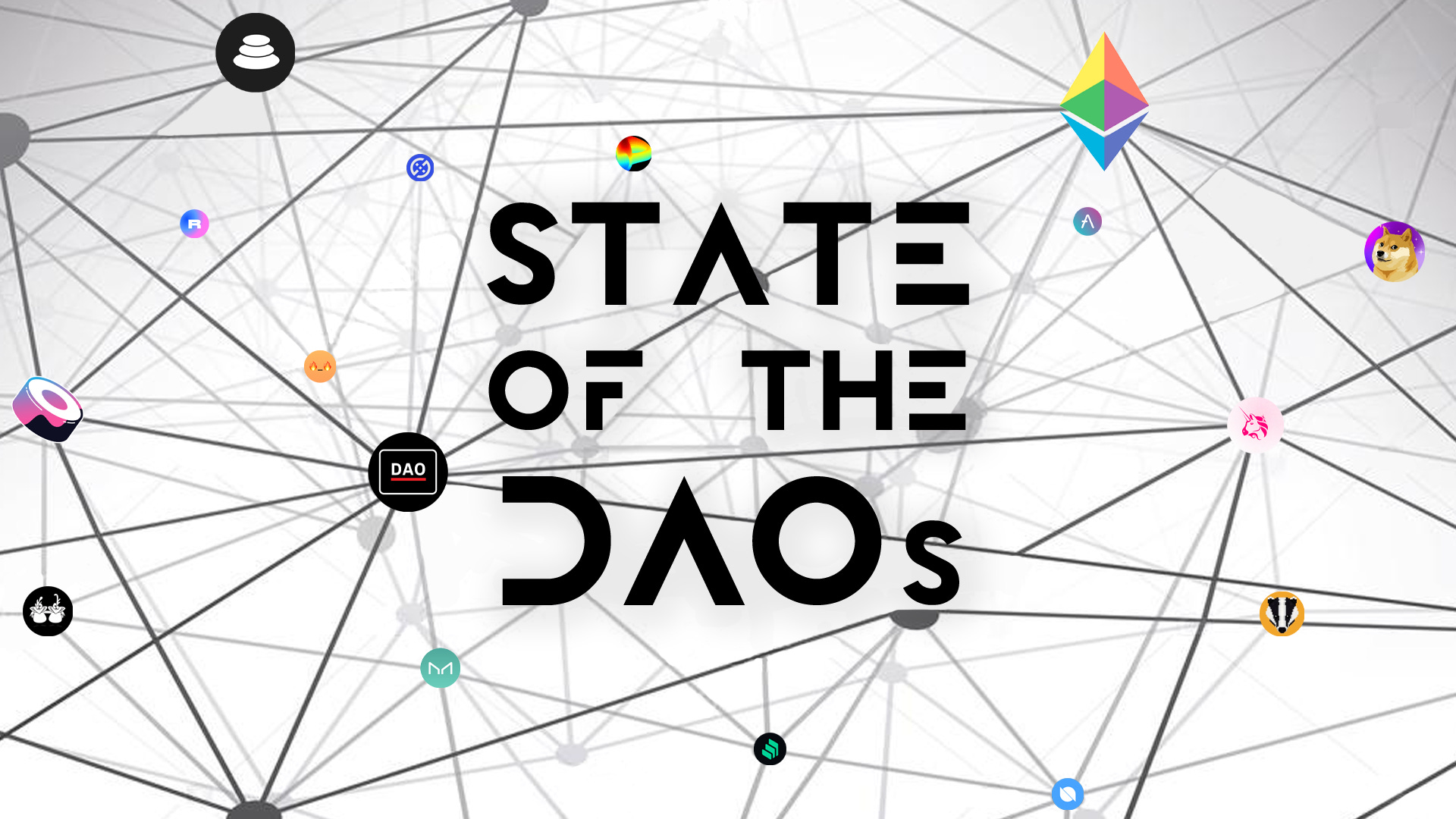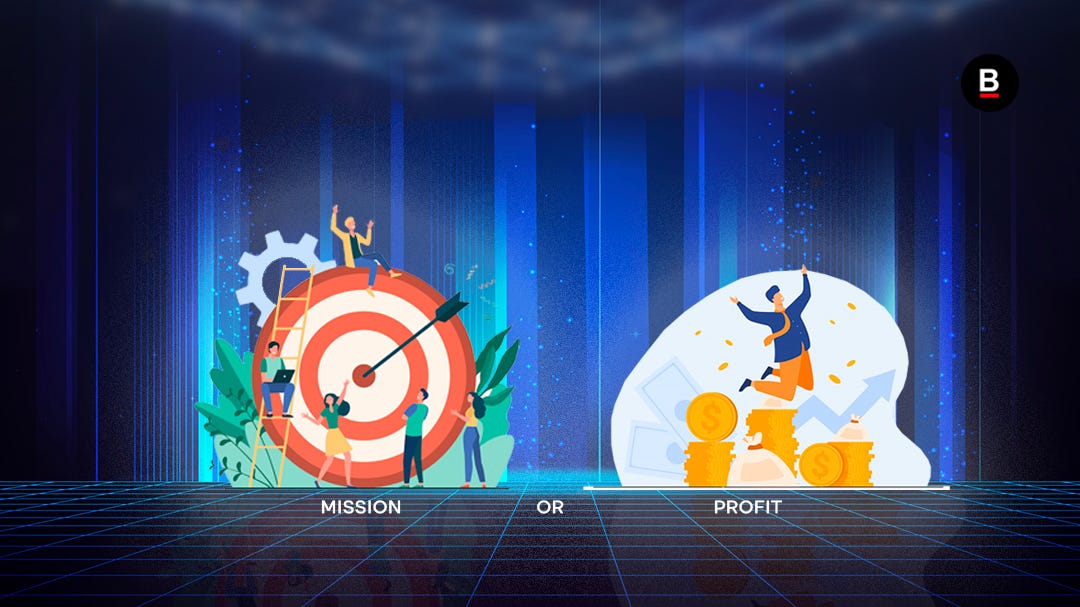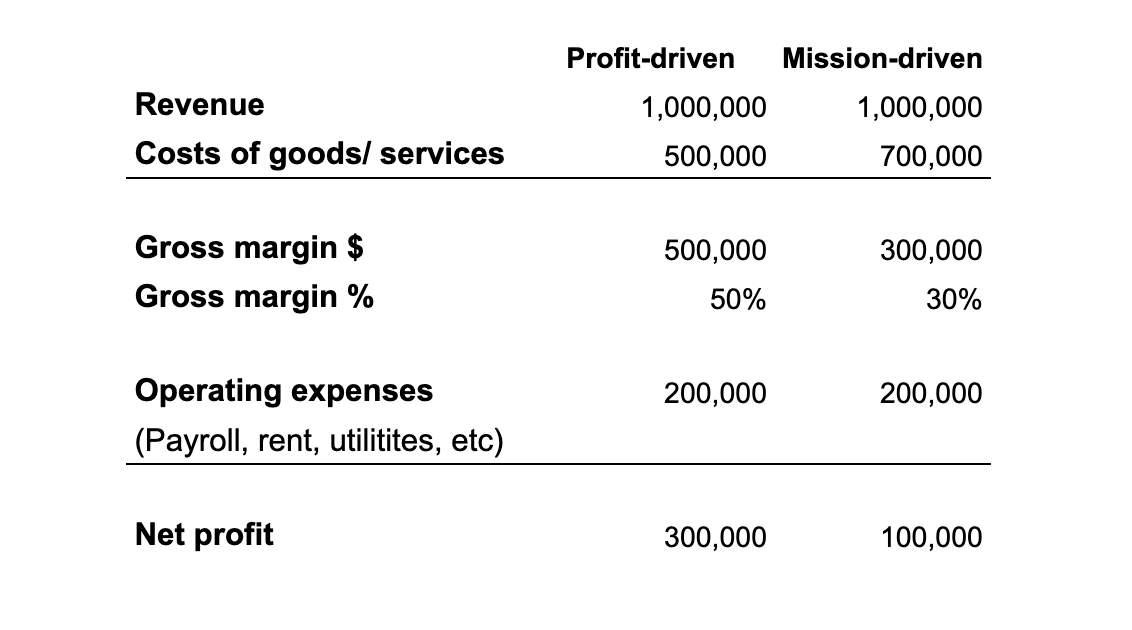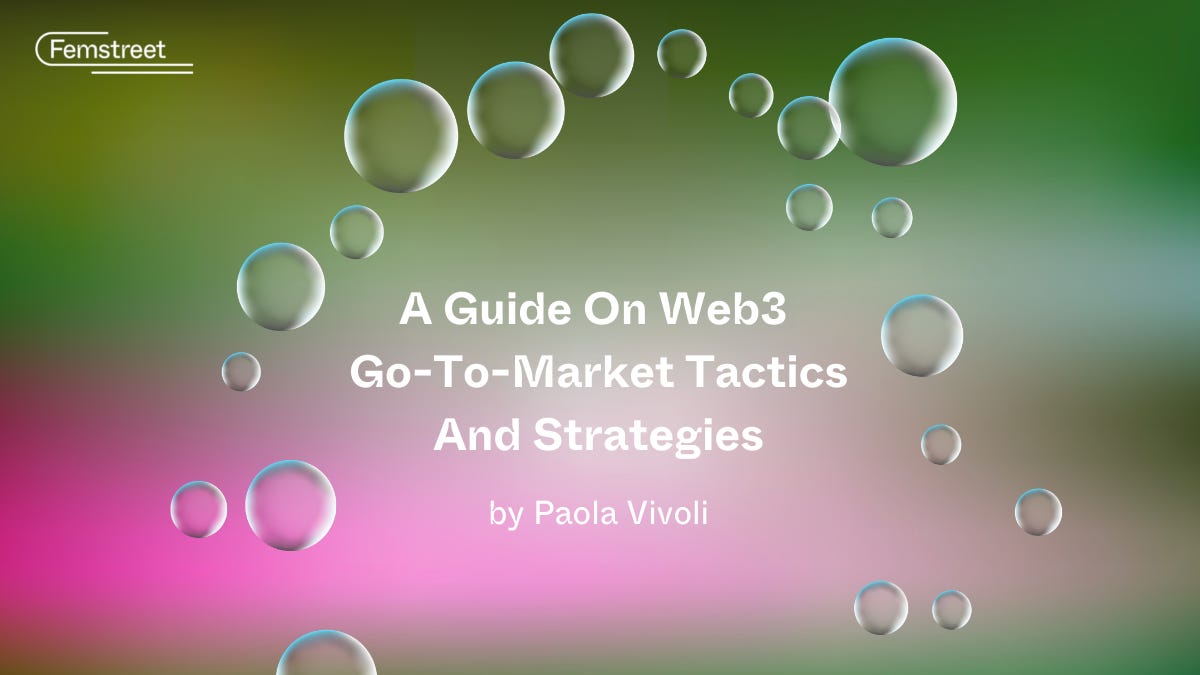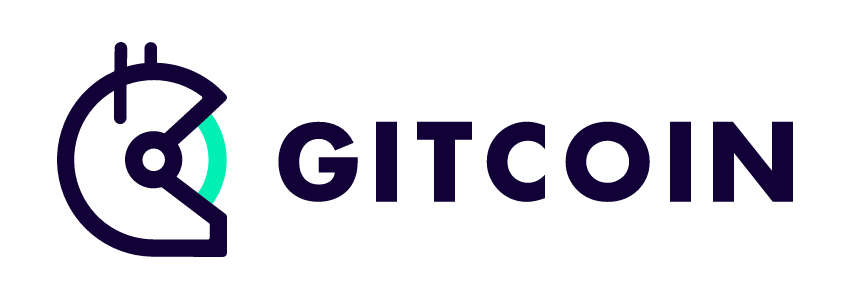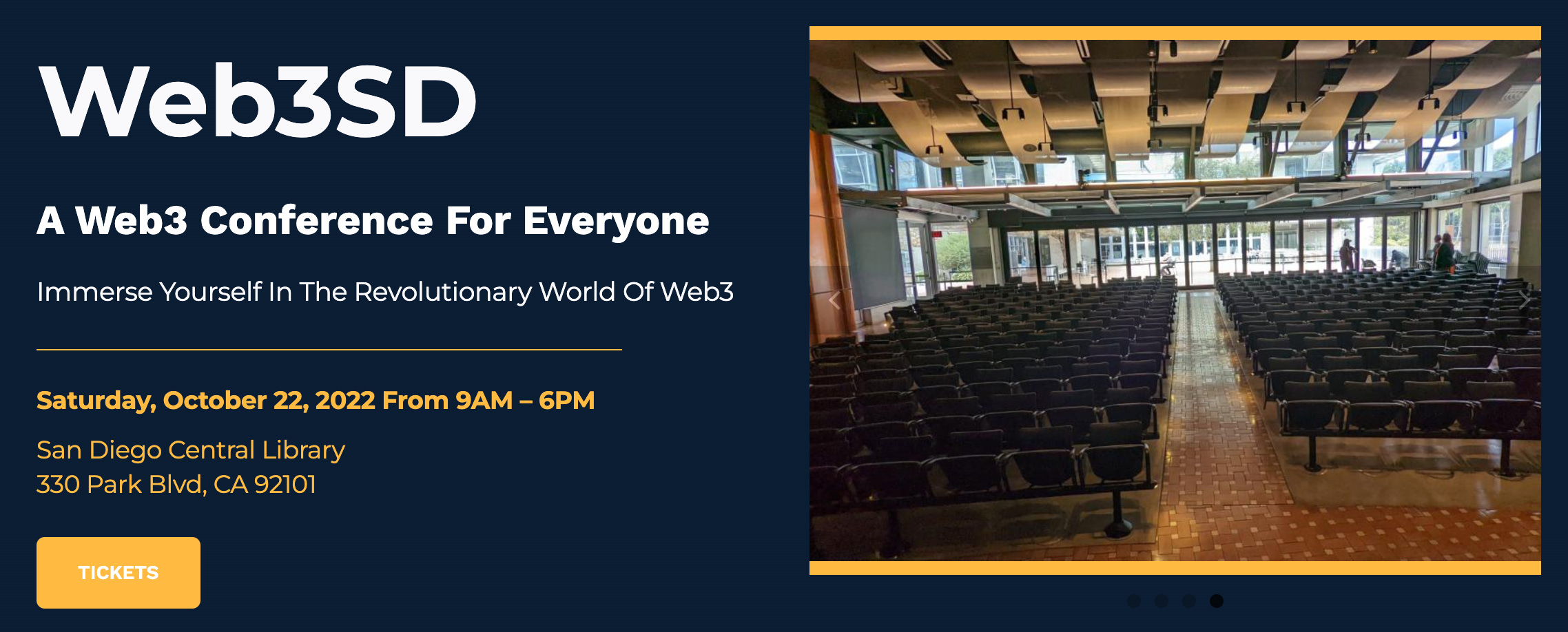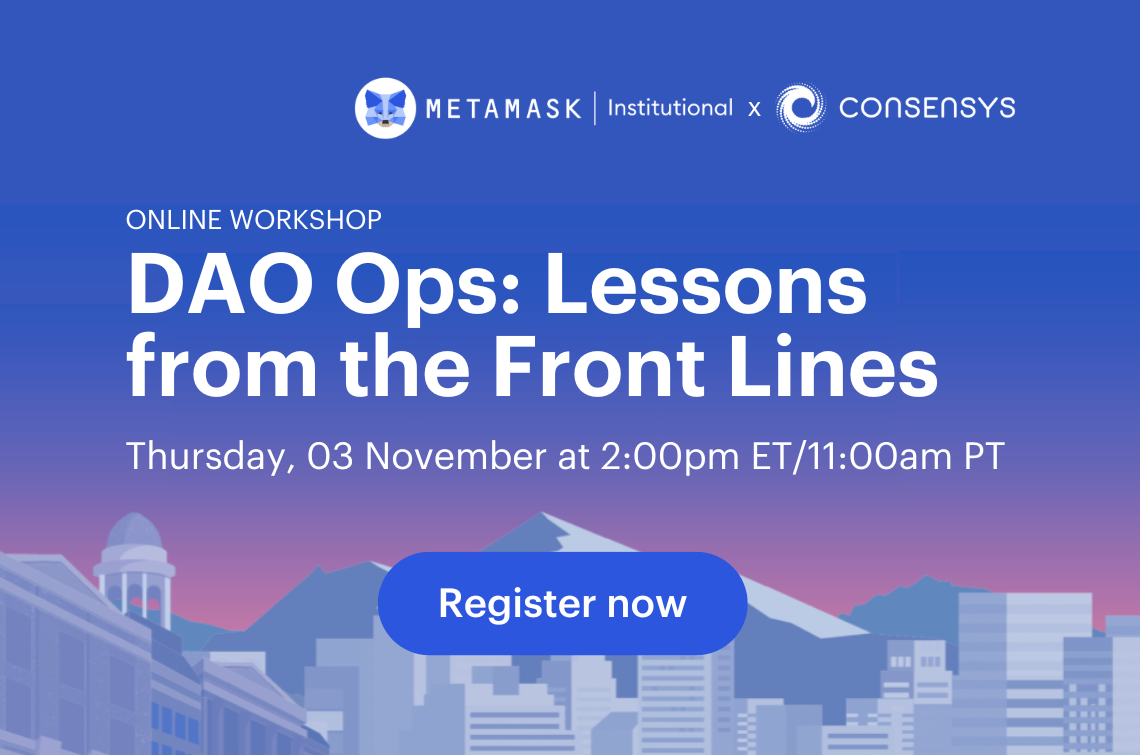What Drives Us: Mission or Profit? | State of the DAOs
What Drives Us: Mission or Profit? | State of the DAOsYou're reading State of the DAOs, the high-signal low-noise newsletter for understanding DAOs.
gm and welcome to State of the DAOs! Although it feels as if we sometimes take it for granted, DAOs are organizations that are as varied in their mission as in their structure. In fact, all organizations have a mission, but sometimes it can be hard to know whether that mission is in the furtherance of a vision to better humanity or just to build a successful product. Just as all organizations have a mission, all DAOs have an operating system stack, and everything in the that stack works to support the purpose of the organization, from the structure, incentives, and even the way information is shared. This week we examine the first element of the DAO OS: Purpose - the reason why we are here. Siddhearta distinguishes between mission-driven and profit-driven organizations to determine what motivates our decision making in pursuit of purpose. When an organization’s purpose is clearly defined it creates alignment and engagement in the community, with everyone working towards a common goal. By working together towards a shared goal, communities win. Next, we feature an interview by ImpactDAOMedia of Regen Network co-founder Gregory Landua to get an inside view on the workings of an environmental ImpactDAO. The Regen Network uses the power of web3 technology to tackle environmental challenges with a focus on creating positive changes to ecological systems. When communities align behind a shared purpose they can make a positive impact and solve some of our biggest problems. Finally, we share the TL;DR on some of the best DAO ecosystem takes and thought pieces, making it easy for you to cut through the noise and learn everything you need to know the current state of the DAOs. Contributors: BanklessDAO Writers Guild (Seneca52 ,Warrior, angelspeaks, Paulito, Lanksss, Kornekt, Jake and Stake, hirokennelly, siddhearta) This is the official newsletter of BanklessDAO. To unsubscribe, edit your settings. What Drives Us: Mission or Profit?How Decision Making Defines an OrganizationAuthor: siddhearta
DAOs are experiments in collective decision making, and we know that communities that work together, win together. But what are we working for? When we look at the DAO operating system, we see that the very first element is purpose, or what orients and steers the organization. Every other element of the operating systems follows after and works to support the purpose of the organization. After all, how do we know what to do if we don’t know where we are going? In pursuit of its purpose, every organization will have a mission, and every organization will require profit. Yet, it can be hard to determine if an organization is mission-driven or profit-driven. Mission-driven organizations need profits to operate and scale in order to fulfill their mission. Profit-driven organizations have a mission that they are working towards. So what is the difference? It’s what motivates their decisions.  What drives your organization?
Profit-driven organizations are extractive and zero-sum:
"How much can we get from you."
Mission-driven organizations are regenerative with positive-externalities:
"How much can we give back." In the traditional business world, we often think of companies as being either for-profit or non-profit. For-profit businesses are driven by revenue, market share, and returns for shareholders or owners. Non-profit are generally mission-driven organizations that raise capital for a specific outcome. Profit-driven orgs are driven by winning. They want the most market share and are often in a winner-take-all competition against other organizations in the industry. For-profit organizations are known for trade secrets, patents, and closed-source code or knowledge. A key indici for profit-driven orgs is that wealth is generated for those on the inside. That might be the CEO, employees, shareholders, or VC capital. Caught in the Balance SheetsLet’s consider a few examples to see how profit-driven and mission-driven orgs might respond. Here we have a simple P&L for two organizations, one profit-driven and the other mission-driven. In this example, let’s assume that our mission-driven organization only uses sustainable and green manufacturing sources and only works with companies that share its values. In this scenario, because the mission-driven organization is acting on its values to fulfill its purpose, it has a significantly higher cost of goods/services sold compared to the profit-driven company. Profit-driven organizations are always trying to find ways to increase their gross margin, or the amount of profit made before deducting operating expenses like payroll, rent, and utilities. By maximizing gross margin and controlling operating expenses, these companies can work towards long-term profitability and growth. All else being equal between these two companies, we can see how simply acting on values can potentially impact the profitability of a company. Let’s look at another scenario: In this scenario the profit-driven and mission-driven organizations have similar numbers, so we can envision how the two organizations might act. What would the profit-driven organization likely do in this scenario? First, they would look at how to reduce the cost of goods/services sold to increase the gross margin, even finding a supplier that would save them an extra 5% would end up giving them $50K per year in net profit. Second, they would look at reducing operating costs, which could mean cutting hours or laying off employees, closing down low-performing teams or departments, or outsourcing certain operating expenses. At the end of the day, they might be able to trim 10% off operating expenses, bringing their net profit to $80K per year. Without having to do anything to affect top-line growth (revenue), profit-driven organizations use many levers to increase net profit. They might end up using the extra $80K per year to reinvest in scaling the organization, trying to drive top-line growth, or simply proving to investors that they are profitable while seeking more investment capital. And the game continues. Now let’s look at the mission-driven organization. Mission-driven orgs can also try to reduce their cost of goods sold, but they would want new suppliers to be in line with their values and their mission, which would certainly restrict possible candidates. But let’s say they find one and can save 3%, giving them an extra $30K gross margin. Because they are mission-driven they might stay with the current operating expenses. Why cut hours when they are still making a profit with current revenue? Why outsource jobs when they can continue providing good jobs to their local community? There might be some areas where they can be more efficient, but since they don’t make decisions based solely on profit they would have to determine what aligns with the company’s values and mission. Maybe they can cut 2% in expenses, so they end up with $36K net profit at the end of the year. Being mission-driven, part of that money might go towards scaling the organization and revenue generating activities for next year, but some might also go towards grants or other mission-first objectives that they are committed to. The questions we are really trying to answer are:
Mission-driven organizations need to make profit to fuel their work and accomplish their mission. Profit-driven have a mission of what it is they are here to do. The difference is what really drives their decision making. Are you making decisions based on dollars, or based on your values? Sometimes your values will cost more. Are you okay with that, or will you sacrifice your values for the sake of increasing profitability? How Does a DAO Decide?For DAOs it can be difficult to determine if the organization is mission-driven or profit-driven. Many DAOs have a mission statement like promoting crypto values and tools, but they also want and need to generate revenue. The question is what is revenue for? Is revenue to generate wealth for those on the inside and compete for the biggest slice of the market? Or is it a tool to further the mission and enable the organization to scale in pursuit of its mission? The decision to be either profit-driven or mission-driven requires consensus and needs to be clear to the community because our purpose determines what motivates our decisions. In centralized organizations, companies can rely on the executive leadership to make decisions about what to produce, how to allocate capital, and the strategy and targets they want to measure and track. But in decentralized organizations, where everyone has decision-making power and the authority to bring new ideas to the table, it is crucial that the community understands what we are here to do and why. Imagine the pain of being in a mission-driven organization, but having new members show up with a profit-driven attitude? How would consensus be reached when there is such a great divide as to what we are working towards? Driving Decision-MakingYou have likely heard about Patagonia’s recent announcement that they are transferring 100% of the company’s voting stock to the Patagonia Purpose Trust, created to protect the company’s values; and 100% of the non-voting stock has been given to the Holdfast Collective, a non-profit dedicated to fighting the environmental crisis and defending nature.  Hey, friends, we just gave our company to planet Earth. OK, it’s more nuanced than that, but we’re closed today to celebrate this new plan to save our one and only home. We’ll be back online tomorrow.
Patagonia’s mission is simple: we are in business to save our home planet. They use that mission to shape and guide their decision making. When they notice opportunities or problems, they ask a simple question:
Our purpose drives our decision making, which influences every aspect of how the organization operates, from strategy, to budgeting, what targets are set, what products get developed, and how to recruit and treat members of the organization. Many profit-driven organizations might say they are mission-driven, but the incentives aren’t aligned. When everything employees do is tied to predicted earnings we try to game the process to reach our targets. Profit-driven organizations spend a lot of time and energy just making sure they are on track, without acknowledging that they are the ones setting the track based on a future they cannot predict. Mission-driven orgs have an opportunity to let the mission inspire and guide decision making. In sense and respond organizations like DAOs, change can come from anyone, which means the community must be willing to trust in the process of collective decision making in pursuit of their goals. This requires a lot of humility, trust, communication, listening, and respect. The question that mission-driven organizations need to be willing to ask is:
A mission-driven DAO is a living system that lets the mission guide the direction and shape the creative potential of its contributors, using sense and respond strategies to course correct along the way. This works easier in small pods and working groups that are free to explore products and services, develop micro-economies that scale, and independently work towards developing a flourishing ecosystem. What Does Winning Look Like?When organizations work together to accomplish their purpose, they win. It’s that simple. That purpose could be profit-driven or mission-driven, and all that really matters is everyone in the organization knows what they are working towards as their north star. Both types of organizations need revenue and profit to fulfill their purpose. The main difference between the two is that profit-driven organizations are playing a zero-sum game where ‘we, the organization, win’. Mission-driven organizations need revenue and profit, but profit has a positive externality, meaning the ‘we’ is bigger than just the organization. In the case of Patagonia, that ‘we’ includes the Earth. There are all kinds of mission-driven organizations that use revenue to accomplish a larger purpose. Some examples include Buurtzorg, Sounds True, and ImpactDAOs like Gitcoin and the Regen Network.
As a contributor to DAOs, you need to figure out if you are in the right place. Does working in this organization support who you are called to be and how you would like to contribute to the world? How does your personal journey connect to the larger movement of a particular DAO? If there is a strong resonance, then your personal journey and the collective movement will reinforce each other and there will be mutual benefit. If there isn’t alignment with the purpose of the organization, you will likely find yourself frustrated and at odds with the work that is being done. What is your purpose? What are you called to do? Knowing who we are and the contribution we have to share, we can get a better idea of where we want to spend our time and energy in service of building the better world we know is possible. Then it’s just a matter of sensing the potential and helping it come to life. Actions steps📖 Read Culture eats Capital for Breakfast | Dermot O’Riordan ⛏️ Dig into What it really means to be a “mission-driven” company | Leif Abraham 🎧 Listen Bankless Podcast 126 - The Crypto Revolution | Josh Rosenthal Impact DAO StudyImpact DAOs Research + Book project is a decentralized, collaborative and open source project. The goal of the project is to publish a book on Impact DAOs that provides information, wisdom, and insights for new web3 entrants. The project covered twelve DAOs in total, conducting three in-depth conversations per DAO. To learn more about the project visit the Gitcoin grant page. If you’d like to follow their work they’ll be regularly sharing their learnings and DAO builder interviews on Crypto Good. You can also follow the hashtag @ImpactDAOMedia on Twitter. Fix the Money, Fix the ClimateAuthor: Seneca52 Is it possible to harness the power of the blockchain to turn the tide on our changing climate? Given what we have already seen in our series on fearless founders, this question should by now be strictly rhetorical. Regen Network is just one of various Web3 initiatives tackling environmental challenges. While it shares the ambition of many socially-oriented projects, it is also grounded in common sense. We sat down with project co-founder Gregory Landua to get an inside view on the workings of the Regen Network.
The ObjectiveIn the most basic terms, Regen Network is a protocol that ‘tracks, verifies, and rewards positive changes to the ecological system’. Most people are familiar with the carbon credit market, which allows companies to make money from decreasing emissions (or at least pay for increasing them). While it enables users to generate high-quality carbon credits, Regen Network is not limited to the carbon market. Its remit includes any project that is ‘regenerative’ (as opposed to ‘extractive’). Therefore is also able to address other environmental issues, such as biodiversity promotion and water conservation. Another difference is that it is built specifically with smaller projects in mind (such as individual farms), as opposed to the prevailing systems that are only financially feasible for mega-corporations.  The BackstoryGregory has a long history in regenerative systems, having studied environmental science at university and gone on to lay the intellectual foundations for modern-day ReFi through writing and research. He came to perceive that neoliberalism was failing to deliver on its dual promise of security and prosperity. At the same time, it was clear to him that global problems require a global mindset as opposed to naive isolationism. For localized efforts to have a global impact, a new type of infrastructure was needed. Enter the BlockchainBy his own admission, Gregory was initially ‘a hard sell’ when it came to crypto. Though skeptical, he was intrigued by the promise of a self-issued currency such as Bitcoin, and respectful of the avant-garde, experimental ethos of the Ethereum community. Together with his co-founder Aaron Craelius, lead architect of Cosmos SDK, he reasoned that it would be possible to construct money in such a way as to be reflective of ecological health, so as to “re-align incentives and have more sophisticated accounting.” Like most Impact DAO founders, the attraction of crypto was not the possibility of generating vast personal wealth, but of leveraging the unique merits of blockchain technology to solve a previously intractable social problem. In this case, the problem to be solved was how to turn verified ecological health into quantifiable units. By “linking digital scarcity to the real ecological scarcity”, blockchain-based consensus systems provided an answer. Forming a blockchain-based organization - a DAO - was the logical next step. How Regen is Set UpAs a Cosmos project, Regen Network is not a freewheeling Ethereum-style environment where anyone can code up any idea. Every dApp needs to be approved by a governance-based process. That said, the organization is far from centralized. While Regen Network is a DAO, there are many sub-DAOs that are responsible for specific chain parameters (e.g. credit minting rules). The organization comprises a mix of structures - both on-chain and off-chain. The same goes for compensation. While on-the-ground project managers (i.e. those generating the eco credits from real-world conservation activities) are compensated in stablecoins, across the DAO there are multiple forms of compensation - from the governance token $REGEN all the way through to good old-fashioned fiat. The FutureGregory is very bullish on the demand for what Regen Network is offering, and sees the main need now being greater involvement not only on the supply side (project developers), but also from the crypto community as a whole. In terms of precisely what is needed, he is less convinced that the answer is “more founders” at this stage. “I think the whole crypto community needs to ape to ReFi”, he says, “But I'd encourage people not to just become founders and just found a new thing.” Technology is not the constraining factor, but the willingness of individuals to contribute, and make any mistakes they are going to make in public. DAOs at a Glance
 Every community should have a living manifesto, that get's reviewed every season, and re-written from scratch every age (4-5 seasons).
It is the north star, a call-to-action, and summary of values, and a primary form of alignment between new members. DAOs are not corporations: where decentralization in autonomous organizations mattersAuthor: Vitalik Buterin In this thought piece, Vitalik challenges the question of whether decentralized decision making is effective by looking at three scenarios in which it is important and needed:
Vitalik argues that a truly decentralized DAO should look to political science for design inspiration. In the future, he predicts these first-order non-corporate organizations will end up supporting second-order organizations that use more leader-driven forms of governance. A Guide On Web3 Go-To-Market Tactics And StrategiesAuthor: Paola Vivoli Web3 organizations need a new go-to-market (GTM) strategy that focuses on distributing ownership to the primary stakeholders—the community. While traditional companies start with the product, Web3 companies need to start with the community by using a bottom-up approach:
Contributors Need To Be More Accountable to the DAOs They ServeAuthor: John Morrow We have all witnessed the rugs, bugs, and hacks of Defi protocols. When things go wrong, token holders frequently find themselves holding the bag, and the losses are catastrophic. Protocol DAOs must deal with the dangers that their products produce, and one approach is predicated on the straightforward maxim, "Don't meddle with our financial system.” In order to be held responsible for the caliber of this service, Gauntlet will transition all interactions with DAOs to a new payment system. Until it is absolutely certain that the job was effective, service money will be kept in escrow. Auditors should also be hacked if users are. "We aim to establish true alignment with our customers and hold ourselves responsible for what matters to them—driving growth at safe risk levels." A protocol-funded backstop like the stkAAVE pool won't be used; instead, 30% of the contract will be applied to our work. For DAOs, with LoveAuthor: Ants Cabraal The need to solve real-world problems was the compelling factor that led to the building of Enspiral. Things needed to be changed at the system level to do this. A better business model was needed to determine how money and information were being distributed, the pattern of leadership, how duties were shared, and the relationship between members were the core issues that were reviewed. The concepts mentioned above are the fundamental ideals decentralized organizations are built on. And even though many people are adopting this new model, they need to be committed to understanding how DAOs operate, what works and what doesn’t. To increase a DAO's working chances and adoption rate, fundamental elements should be structured properly to allow members to contribute in the most suitable ways. As DAOs are still in their experimental stage, initial structures might not work for a long time thus, the keys to making it work are execution and adaptation. Ecosystem Takes
The Pragmatists Guide to DAOing aka Reasonable ways to Govern a DAOAuthor: John Buck, Travis Marsh 🔑 Insights:
Let’s talk about subDAOAuthor: Shawn Grubb 🔑 Insights:
Why decentralization matters — A legal perspectiveAuthor: WatsonLaw and Flipside Governance. 🔑 Insights:
Page DAO: Salve for Authors in a Struggling IndustryAuthors: T. Dylan Daniel, PageDAO 🔑 Insights: Page Dao is founded to address the inequities of the publishing industry by creating a Web3 remedy to the problems faced by both the authors and readers in the publishing industry.
DAO Spotlight: Gitcoin DAOSince its debut in November 2017, Gitcoin has been on a mission to fund and build Web3 technology. The goal is to provide open-source digital public goods that solve primary problems. To achieve this, the platform offers a world of opportunities to programmers and developers of open-source projects. They started by ensuring that these brains behind open-source software are properly incentivized for their contribution to building the Web3 ecosystem. Today, Gitcoin's funding for open-source software totals about $69M. Gitcoin offers grants, hosts hackathons, and bounties for developers around the world that are a part of the community. The DAO allows developers to crowdsource funding for their projects. Gitcoin also gives extra funding quarterly to open-source projects that qualify as "public goods" using its special Quadratic Funding Mechanism. These "public goods" are projects that are beneficial to everyone and yet not in competition with other existing projects. Furthermore, Gitcoin bounties provide developers with opportunities to receive hourly payments by contributing to specially funded bounties. These projects are usually funded by other contributors in the DAO. Interested coders can also participate in Hackathons organized by Gitcoin. Here, they work with other developers as they put their skills to the test, attempting to come up with software solutions within a limited time. To ensure impartial distribution of funds and strengthen resistance against Sybil attacks, Gitcoin came up with what is called the Gitcoin Passport. This is a digital identity for the Web3 space that uses verifiable credentials to authenticate identity on the internet without storing personally identifiable information. Gitcoin passport aids transparency in DAO governance by ensuring that every participant is a unique human. This mitigates the chances of bad actors creating several multiple anonymous identities to manipulate democratic processes within the community. Gitcoin continues to blaze a trail in fostering open-source software development – building Web3. To get updates on the latest activities at the DAO, check them out on Twitter or join the Gitcoin Discord to be a part of the community. Get Plugged InEvent HighlightsShowcasing the power of blockchain technology and Web3 to change the world, Web3SD is designed for diversity with the lowest possible barrier to entry — On November 3, join experts from MetaMask Institutional and the ConsenSys Cryptoeconomic Research team as they share best practices and lead breakout sessions around core DAO ops problem areas including governance, treasury management, payments, community engagement and development. Across these rooms expect to discuss the following topics:
If you liked this post from BanklessDAO, why not share it? |
Older messages
humanDAO Puts NFTs to Work for Underserved Communities | Decentralized Arts
Tuesday, October 4, 2022
Dear Bankless Nation, Kaf begins his editorial, saying, "When the market is down, everything seems more challenging. But now is the perfect time to build." The staff here at Decentralized
Getting Up To Speed | Bankless Publishing Recap
Monday, October 3, 2022
Top-shelf Educational Web3 Content Shipped Directly to Your Inbox
Seeking ConsenSys | BanklessDAO Weekly Rollup
Sunday, October 2, 2022
Catch Up With What Happened This Week in BanklessDAO
The Merge | Decentralized Law
Saturday, October 1, 2022
A Journal Covering the Crypto-Legal Space
The Merge (Part III) | DeFi Download
Thursday, September 29, 2022
After the Merge: token withdrawals; The Surge, The Verge, The Purge, and the Splurge; Proto-Danksharding. This is how Ethereum scales, handles MEV, and survives the future.
You Might Also Like
Bitcoin’s steep decline fueled by short-term holders
Sunday, March 2, 2025
High-frequency traders and day traders rile Bitcoin market as prices plummet. ͏ ͏ ͏ ͏ ͏ ͏ ͏ ͏ ͏ ͏ ͏ ͏ ͏ ͏ ͏ ͏ ͏ ͏ ͏ ͏ ͏ ͏ ͏ ͏ ͏ ͏ ͏ ͏ ͏ ͏ ͏ ͏ ͏ ͏ ͏ ͏ ͏ ͏ ͏ ͏ ͏ ͏ ͏ ͏ ͏ ͏ ͏ ͏ ͏ ͏ ͏ ͏ ͏ ͏ ͏ ͏ ͏ ͏ ͏ ͏ ͏ ͏
Asia's weekly TOP10 crypto news (Feb 24 to Mar 2)
Sunday, March 2, 2025
According to Coindesk, citing local news outlet Dawn, Pakistan is planning to establish a National Crypto Committee to formulate cryptocurrency policies. ͏ ͏ ͏ ͏ ͏ ͏ ͏ ͏ ͏ ͏ ͏ ͏ ͏ ͏ ͏ ͏ ͏ ͏ ͏ ͏ ͏ ͏ ͏ ͏
On ICOs, NFTs, and Memecoins
Sunday, March 2, 2025
CRYPTODAY 143 ͏ ͏ ͏ ͏ ͏ ͏ ͏ ͏ ͏ ͏ ͏ ͏ ͏ ͏ ͏ ͏ ͏ ͏ ͏ ͏ ͏ ͏ ͏ ͏ ͏ ͏ ͏ ͏ ͏ ͏ ͏ ͏ ͏ ͏ ͏ ͏ ͏ ͏ ͏ ͏ ͏ ͏ ͏ ͏ ͏ ͏ ͏ ͏ ͏ ͏ ͏ ͏ ͏ ͏ ͏ ͏ ͏ ͏ ͏ ͏ ͏ ͏ ͏ ͏ ͏ ͏ ͏ ͏ ͏ ͏ ͏ ͏ ͏ ͏ ͏ ͏ ͏ ͏ ͏ ͏ ͏ ͏ ͏ ͏ ͏ ͏ ͏ ͏ ͏ ͏ ͏ ͏ ͏ ͏
StanChart warns of further downside for Bitcoin over the weekend akin to August 2024
Saturday, March 1, 2025
Standard Chartered sees parallels to past Bitcoin sell-offs amid volatile weekend projections. ͏ ͏ ͏ ͏ ͏ ͏ ͏ ͏ ͏ ͏ ͏ ͏ ͏ ͏ ͏ ͏ ͏ ͏ ͏ ͏ ͏ ͏ ͏ ͏ ͏ ͏ ͏ ͏ ͏ ͏ ͏ ͏ ͏ ͏ ͏ ͏ ͏ ͏ ͏ ͏ ͏ ͏ ͏ ͏ ͏ ͏ ͏ ͏ ͏ ͏ ͏ ͏ ͏
Weekly Project Updates: Babylon Launches Airdrop Registration, Berachain Initiates Phase One of Governance, and Me…
Saturday, March 1, 2025
In the recent theft incident of Bybit, hackers laundered money by exchanging ETH for BTC through THORChain, bringing huge trading volume and fees to THORChain. ͏ ͏ ͏ ͏ ͏ ͏ ͏ ͏ ͏ ͏ ͏ ͏ ͏ ͏ ͏ ͏ ͏ ͏ ͏ ͏ ͏
Bitcoin pullback could be set up for $370k bull run price target
Friday, February 28, 2025
Bitcoin's 27% slide raises prospects for rebound, aligns with historical cycle patterns. ͏ ͏ ͏ ͏ ͏ ͏ ͏ ͏ ͏ ͏ ͏ ͏ ͏ ͏ ͏ ͏ ͏ ͏ ͏ ͏ ͏ ͏ ͏ ͏ ͏ ͏ ͏ ͏ ͏ ͏ ͏ ͏ ͏ ͏ ͏ ͏ ͏ ͏ ͏ ͏ ͏ ͏ ͏ ͏ ͏ ͏ ͏ ͏ ͏ ͏ ͏ ͏ ͏ ͏
WuBlockchain Weekly: SEC Terminates Lawsuits Against Multiple Crypto Companies, Bitcoin Drops Below $80,000, OKX S…
Friday, February 28, 2025
On Friday, OKX market data revealed that BTC fell below $80000, reaching a low of $78258, with the current price at $80514, reflecting a 24-hour decline of 7.22%. ͏ ͏ ͏ ͏ ͏ ͏ ͏ ͏ ͏ ͏ ͏ ͏ ͏ ͏ ͏ ͏ ͏ ͏ ͏
FBI confirms North Korea-backed Lazarus hackers stole $1.5 billion from Bybit
Thursday, February 27, 2025
FBI tracks Ethereum laundering spree by North Korean hackers amid rising threat of cyber warfare in the crypto world. ͏ ͏ ͏ ͏ ͏ ͏ ͏ ͏ ͏ ͏ ͏ ͏ ͏ ͏ ͏ ͏ ͏ ͏ ͏ ͏ ͏ ͏ ͏ ͏ ͏ ͏ ͏ ͏ ͏ ͏ ͏ ͏ ͏ ͏ ͏ ͏ ͏ ͏ ͏ ͏ ͏ ͏
Interview with MicroStrategy Founder Michael Saylor: The Company Holding the Most Bitcoin in the World
Thursday, February 27, 2025
In this interview, Colin from WuBlockchain had an in-depth discussion with MicroStrategy founder Michael Saylor about the company's ongoing Bitcoin acquisition strategy, the growing adoption of
Abu Dhabi Invests $436.9M In Bitcoin ETF
Thursday, February 27, 2025
February 17th, 2025 Sign Up Your Weekly Update On All Things Crypto TL;DR Abu Dhabi Invests $436.9M In Bitcoin ETF Changpeng Zhao Sparks Meme Coin Rumours Coinbase Finally Lists POPCAT & PENGU
